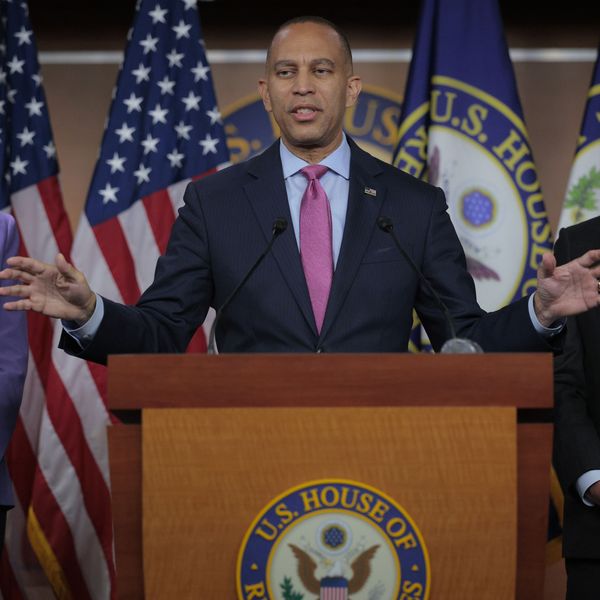Over four years after BP's Deepwater Horizon explosion spilled millions of gallons of oil into the Gulf of Mexico, scientists say they have discovered a ring of oil pollution on the sea floor the size of Rhode Island.
Researchers from the University of California at Santa Barbara, University of California at Irvine, and Woods Hole Oceanographic Institution published a paper Monday in the journal Proceedings of the National Academy of Science (PNAS), estimating that approximately 10 million gallons of oil have congealed on the ocean bottom around the Deepwater Horizon rig. The researchers referred to the over 1,200-square-miles of pollution as a "bathtub ring."
"There's this sort of ring where you see around the Macondo well where the concentrations are elevated," UC-Irvine geochemistry professor Dave Valentine, lead author of the study, told the Associated Press. Within the ring, the level of oil is up to 10,000 times greater than outside, Valentine explained to the publication.
The findings come a week after Geoff Morrell, senior vice president of U.S. communications and external affairs for BP, wrote an op-ed in Politico entitled, "No, BP Didn't Ruin the Gulf," in which he claims "the environmental impact was of short duration and in a limited geographic area."
Raleigh Hoke of the Gulf Restoration Network told Common Dreams that the new study "confirms what many have been saying for long time: that BP oil is still in the Gulf and is impacting coastal communities and marine life."
"BP spilled 210 million gallons of oil into the gulf. Much of that is not accounted for," Hoke continued. "This study points to where some of that oil went, but we are still seeing tar balls wash up on our shore."
In an email to the AP, BP spokesperson Jason Ryan accused the study's authors of "grossly overstating" the oil pollution.
But Hoke charges, "BP is spending millions of dollars on public relations to downplay its damage to the Gulf, and on legal expenses to minimize damage to itself. It is essential that BP be held fully to account for the damage being done."


